By Texas Homesteader ~
Hobby Beekeeping is enjoying quite a popular resurgence. Many people are becoming interested in raising their own bees, whether for pollination of their own gardens, that delicious honey, valuable beeswax or just to care for our beloved pollinators.
Today I’ll be talking about requeening our hive. There are many reasons a beekeeper might want to requeen their hives. Maybe their existing queen is older and not productive anymore. Or maybe over the years the bees in the hive have swarmed and requeened their colony so many times the hive is becoming more aggressive, or ‘hot’.
You see, each time the colony makes their own queen, she must make her maiden flight for breeding with the surrounding bees. Oftentimes those are wild bees and some might even have more aggressive Africanized bee influence.
If you have very many generations taking those steps you’ve gotten too much opportunity for aggressive characteristics to be introduced into your hive.
(Note: Some links in this post are for further information from earlier posts I’ve written. But links preceded with * are affiliate links. If you click them and buy something (almost anything, not just the item noted) I could receive a tiny commission. But the price you pay will NOT change. It’s an easy way to support this blog without anything coming out of your pocket. So click often! Thank you!)
4 Reasons To Requeen A Beehive
- Treat brood disease issues – Requeening creates a brood break. When introducing a new queen you’ll have a week to 1.5 weeks of no brood while your new queen is introduced and begins laying.
- Underperforming queen – Either she’s older or just not doing the job well enough anymore.
- Aggressive colony – Requeening with a mated queen from a calm species could solve the issue. It may take about a month until the original colony bees are replaced with new queen brood.
- Expanding your hives – If you’re doing a split, it assures you get a good, young, healthy queen in each split hive colony.
Drawbacks To Requeening Your Beehive
- Expense – Mated queens can be expensive depending upon supply, species desired. etc. Our queens cost almost $40 each!
- Delay in production – You have to remove the old queen, wait to introduce the new caged queen and wait again for her to be released before finally picking up with laying eggs in the hive.
- Queen rejection – Sometimes the hive refuses to accept the new queen. Ugh, money spent for nothing?
- Labor intensive – You have to find the existing queen and remove her beforehand, go back later & install the new queen, then go back again a week later to locate the new queen and make sure she’s out of her shipping box.
- Swarm woes – It’s more financially painful to lose a purchased queen to swarm.
Our Queen-Buying Decision
We ordered mated Italian/Carniolan cross queens in December. They’re supposed to be a great species combination of calm and high production honeybees, extremely gentle toward beekeepers and able to defend themselves against insect pests.
As it gets closer to time for us to pick up our new queens in the spring, we’ll first need to find and remove the existing queen 24 hours before the new queens are installed.
Honeybee colonies won’t tolerate two queens in a hive. One of the queens will have to kill the other; you sure don’t want that after you’ve spent so much money purchasing your queens!
We’re planning on doing a split of this double-deep hive with a new queen in each split. That way each of these new queens will have a hive of their own.
We’ll opt for the Frame-Swap Split method instead of the quicker & easier Walk-Away Split since we have to locate the existing queen anyway.
Locating The Existing Queen Bee
Trying to look frame-by-frame for the queen, well it can be a little cramped pulling and returning full frames of bustling bees. Since we’ll be splitting the hive anyway, here’s what we did to more easily locate our existing queen while performing a hive split at the same time.
We first set up a bottom board topped with an empty deep hive box next to our existing hive. Then we pulled a bee-filled frame from the existing hive and looked carefully on both sides for the queen. If she wasn’t on that frame we placed the now-inspected frame into the adjoining empty hive box.
When that empty hive box was about half filled with inspected frames we pushed the inspected frames to the middle of the hive box & finished filling that hive box with empty frames on the outside edge.
Then we continued looking for the queen on the remaining frames. When she was removed from the hive we pushed all filled frames to the middle of the hive box & added empty frames on the outside empty spaces the same as we’d done with the empty hive box before.
That way you’ll have 2 double-deep hive boxes for each hive with expansion room in each hive box. And it makes and it much easier to see which frames you’d already inspected and which need to still be inspected. Plus we’ve basically completed a simple frame-swap split at the same time.
Picking Up Our New Honeybee Queens
We picked up our new queens the first week of April and they were presented in wood/wire boxes complete with a couple of nurse bees to accompany the queen.
We were disappointed that the queens weren’t marked as the ad indicated they would be. It would be SIGNIFICANTLY easier to locate the queen in a bustling hive of thousands of bees if she were marked.
So we bought a *bee-marking kit so we can do this ourselves when we get into the hive to inspect it.
Some Things We Had To Learn On Our Own:
When we ordered the queens several months ago we weren’t told of any advance steps we needed to take before installing our new queens, or how installing the new queen would work.
Thank goodness RancherMan’s a research king. So he discovered these points we needed to know – hopefully they’ll help you too:
- You should go into your hives and remove your existing queen at least 24 hours before your new queen is introduced.
The bees in the hive will realize they’re queenless in a couple of hours. Then they start trying to choose an egg to produce a queen. But having the queen removed 24 hours prior increases the chances that your new queen will be accepted by the hive, as they’re looking for a new queen anyway.
- Before you install your queen bee cage into your existing beehive, you’ll need to remove the (in our case) cork plug at the end where the bee candy is located. We used the sharp end of a thumb tack to pop it loose.
Some beekeepers say you need to poke a hole in the candy to aid the bees in having a starting point in eating the candy. But many beekeepers have accidentally injured their queens doing this. So RancherMan & I opted to remove the cork plug and leave the candy for the bees to tackle themselves (they did a fine job of it)
- Install the queen as soon as you get her home, or at least within 12 hours. Some beekeepers say as long as you give her some sugar water or honey you can keep her in the cage a little longer. But it’s best to get her into the hive as soon as you get her home.
Our queen was sold with 2-4 nurse bees. They will accompany her to the hive.
- You’ll be installing your queen cage between the middle frames of the hive box. So separate the two middle frames as widely as you can while you’re locating the existing queen.
This will allow space for the requeening cage to be wedged between the frames when your new queen bee is introduced.
- The screen side of the cage (wide side) should be facing the open area between the frames and not against the frames. That way the bees in the hive can access the queen to feed her until she’s released. If the screen side is pressed against the frames they cannot reach her to care for her.
The hive’s honeybees will eat the ‘candy block’ that holds the queen in the cage in about 2-3 days to release the new queen bee.
If you’ve purchased a mated queen, she’s immediately ready to begin laying eggs as soon as she’s released – provided there’s comb prepared to receive the eggs. However it can take up to 7 days after she’s released to feel comfortable enough in her new digs to start laying eggs.
Inspecting The Hive After Requeening
Many beekeepers recommend giving the hive a week after requeening before checking inside to see if the queen has been released.
You’ll want to check on her at that time though, because sometimes the queen gets stuck in the cage for whatever reason and can’t get out. If that’s the case you’ll want to pop the wire and release her into the hive.
If during your first inspection you confirm she’s not in the cage, go ahead & inspect the hive & locate your queen if possible. (marking her if necessary for much easier location next time! Eh hemmmm…)
Also look for any freshly-laid eggs. Any previously-laid eggs from the prior queen will have grown into small larvae by that time. So any eggs you see will be from your new queen bee.
Some beekeepers like to look for and remove capped queen cells while they’re doing this first post-requeening inspection. That’s because they feel the colony might be trying to raise a queen of their own genetics. Those beekeepers fear that hive-raised queen could then hatch & kill their newly-purchased queen.
After the inspection is complete and the cage has been removed, don’t forget to tighten the frames back together before putting the lid back on the beehive.
Now that we’ve split our double-deep hive and requeened each of them, RancherMan & I are looking forward to a productive beekeeping season.
~TxH~
BEEKEEPING SERIES:
- Preparing For the Hives
- Obtaining Your Bees
- Inspecting Your Hives
- Feeding Bees With A Frame-Feeder
- Expanding The Langstroth Hive
- Performing A Walk-Away Split
- Performing A Frame-Swap Split
- 5-Minute Beehive Stand
- Adding A Honey Super To Your Hive
- Catching A Bee Swarm (With Video)
- Make FOUR 5-Frame Nuc Boxes From 1 Sheet of Plywood!
- Varroa Mite Treatment For Your Apiary
- Preparing Your Hive For Honey Harvest
- Proper Honey Bottling Tips
- Purifying Your Beeswax
- MYO Beeswax Lip Balm
- Homemade Beeswax Jar Candles
- Beeswax Wraps – A Natural Solution To Plastic Wrap
…And MUCH More!
See All Our Beekeeping Posts
C’mon by & sit a spell! Come hang out at our Facebook Page . It’s like sitting in a front porch rocker with a glass of cold iced tea. There are lots of good folks sharing! And you can also follow along on Pinterest, Twitter or Instagram
If you’d like to receive an email when a new blog post goes live,
subscribe to our Blog!
References:

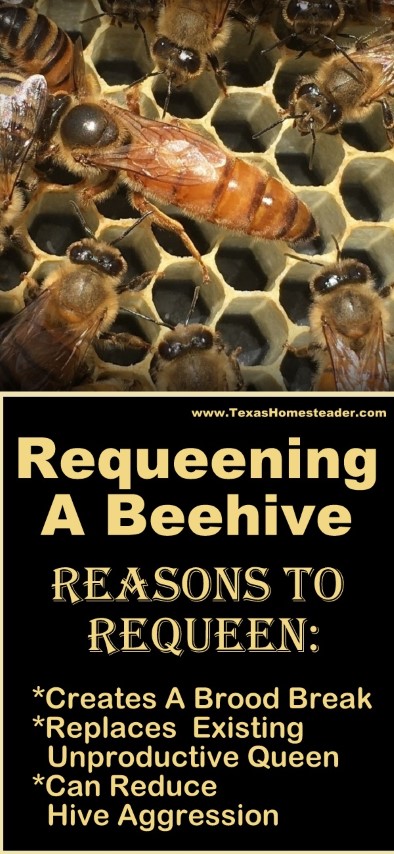
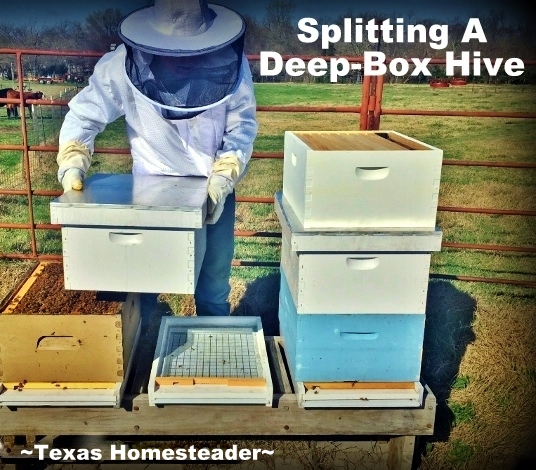
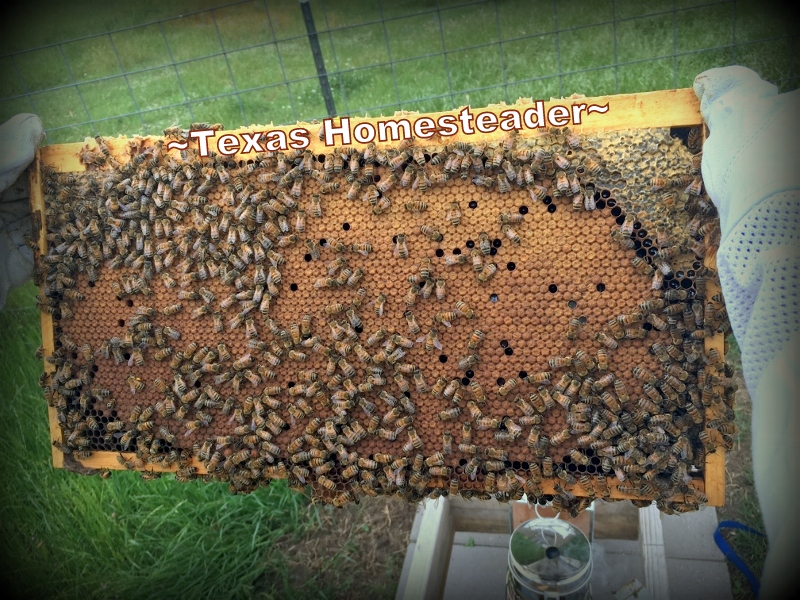
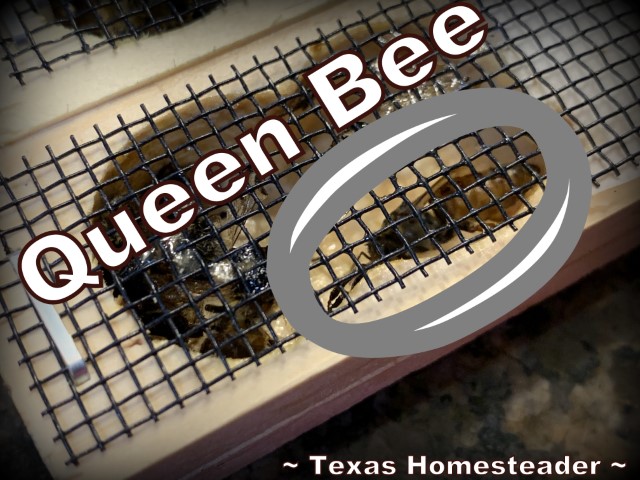
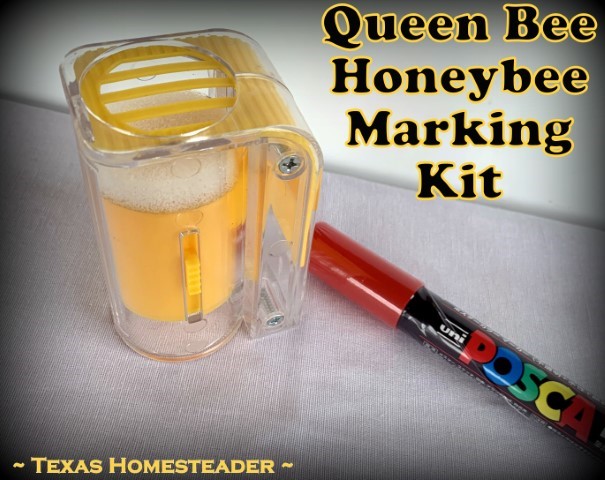
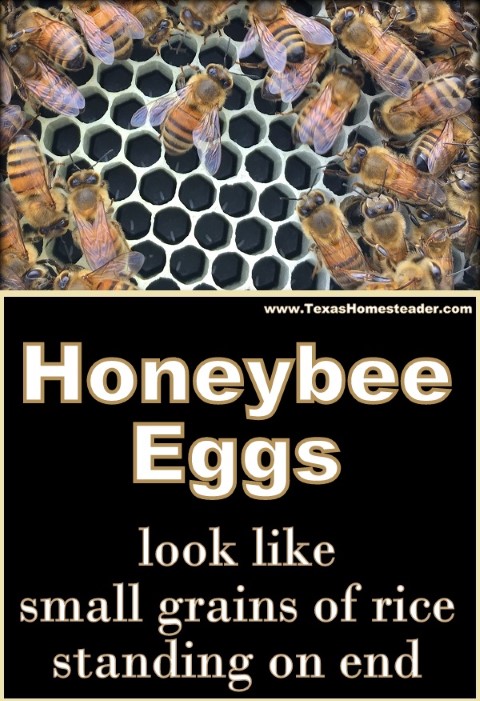

I’m interested in making beeswax candles for my home. Do you sell beeswax, and if you do, would you provide a link so I may purchase some?
Thank you, Kay
So sorry to be so late to answer Kay, we’ve been out of pocket. Typically we list beeswax blocks on my ebay page –> https://www.ebay.com/usr/txhomesteader1 – but none are currently listed there. However I do have some beeswax disks that are approximately 1.5 oz each that we can sell for $3.99 each (free shipping). If you like I can send you a private message with deets? ~TxH~
This is so interesting to me even though I would never be brave enough to raise bees myself. I have enough issues with raising meal worms and they don’t sting but they do creep me out. My hens love them though. I was wondering about the old queen bees – how are they dispatched? Are they destroyed away from the hive so as not to upset the colony? Also, how does a beekeeper maintain status quo when it seems like the colonies will only increase in population?
I was nervous when RancherMan suggested beekeeping too. We’ve learned so much, with so much more yet to learn. I think beekeepers never quite learn it all – so many things vary depending on hive location, species, etc. To answer your question, RancherMan did take a couple of steps away from the hive when dispatching the existing queen, the colony had no reaction. And as for your second question about colony populations – the number of bees and even number of hives in our apiary ebb & flow. When we get too many RancherMan will often sell some nucs to allow other beekeepers to start beekeeping or increase their numbers. But nature takes them away too, whether by swarming, varroa mite infestation, weather, etc. Just last year we lost most of our hives due to a freak storm. Even though our hives were strapped down tight, the wind was so high it dumped our stands and blew the covers off the hives and rained into them all night. 🙁 We’re in the process of rebuilding our hive numbers by doing some splits and hoping to capture some swarms too. It’s an ever-changing thing, but we love it! ~TxH~
I love your posts, but the beekeeping ones are SOOO fascinating!
Laurinda – aren’t you sweet as peaches! Thank you for your kind words. 🙂 ~TxH~